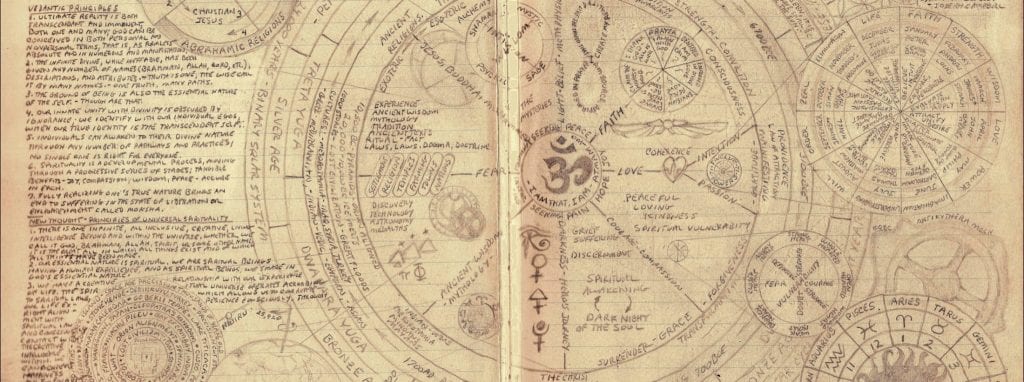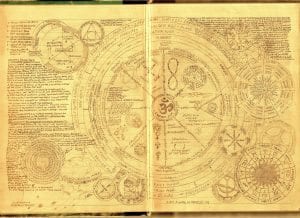Mandalas take on countless sizes, shapes and forms and are a tool for gaining perspective, expanding thought and relaxing the mind. This excerpt from The Power of Myth by Joseph Campbell provides an excellent description of how a mandala works.
Excerpt from the Power of Myth:
CAMPBELL: “Mandala” is the Sanskrit word for “circle,” but a circle that is coordinated or symbolically designed so that it has the meaning of a cosmic order. When composing mandalas, you are trying to coordinate your personal circle with the universal circle. In a very elaborate Buddhist mandala, for example, you have the deity in the center as the power source, the illumination source. The peripheral images would be manifestations or aspects of the deity’s radiance.
In working out a mandala for yourself, you draw a circle and then think of the different impulse systems and value systems in your life. Then you compose them and try to find out where your center is. Making a mandala is a discipline for pulling all those scattered aspects of your life together, for finding a center and ordering yourself to it. You try to coordinate your circle with the universal circle.
MOYERS: To be at the center?
CAMPBELL: At the center, yes….https://youtu.be/19C0noWn3T8
My personal mandala has been evolving over the past few years. It is the place I can go at any time to pause and reflect, to pray, to meditate, or just sit in quiet contemplation in an empty space between the lines for a while. – Clay Boykin
Available on Etsy: 11×17 cardstock, suitable for framing









